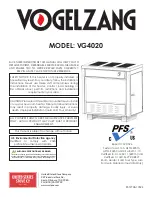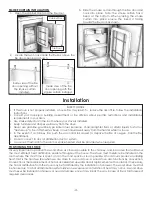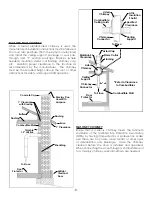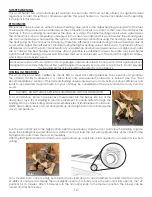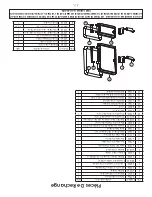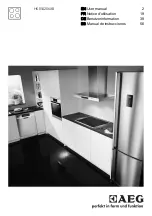
-11-
Operating Instructions
CAUTIONS: HOUSE FIRE HAZARDS
•
Do not store wood on floor protector, underneath stovepipe(s) if applicable, or anywhere within clearances
to combustible surfaces specified for this appliance.
•
Never operate with secondary tubes, fiber board, or insulation removed.
OPERATING SAFETY PRECAUTIONS
•
Never overfire this appliance by building excessively hot fires as a house/building fire may result. You are
overfiring the appliance if it begins to glow or turn red.
•
Never build excessively large fires in this type of appliance as damage to the firebox or smoke leakage may
result.
•
Hot while in operation. Keep children, clothing, and furniture away. Contact may cause skins burns. Do not
touch the appliance until it has cooled.
•
Provide adequate air for combustion to the room where the appliance is installed.
•
Inspect chimney liner every 60 days. Replace liner immediately if it is rusting or leaking smoke into the room.
•
Attempts to achieve heat output rates that exceed heater design specifications can result in permanent
damage to the heater.
WARNING: EXPLOSION HAZARD
•
Never use chemicals, gasoline, gasoline-type lantern fuel, kerosene, charcoal lighter fluid, or similar
flammable liquids to start or “freshen up” a fire in the appliance.
•
Keep all flammable liquids, especially gasoline, out of the vicinity of the appliance - whether in use or in
storage.
This heater is designed to burn natural wood only. Higher efficiencies and lower emissions generally result when
burning air dried seasoned hardwoods, as compared to softwoods or to green or freshly cut hardwoods.
DO NOT
BURN:
1. Garbage;
2. Lawn clippings or yard waste;
3. Materials containing rubber, including tires;
4. Materials containing plastic;
5. Waste petroleum products, paints or paint thinners,
or asphalt products;
6. Materials containing asbestos;
7. Construction or demolition debris;
8. Railroad ties or pressure-treated wood;
9. Manure or animal remains;
10. Salt water driftwood or other previously salt water
saturated materials;
11. Unseasoned wood; or
12. Paper products, cardboard, plywood, or
particleboard. The prohibition against burning
these materials does not prohibit the use of fire
starters made from paper, cardboard, saw dust,
wax and similar substances for the purpose of
starting a fire in an affected wood heater.
Burning these materials may result in release of toxic fumes or render the heater ineffective and cause smoke.
Dead wood lying on the forest floor should be considered wet, and requires full seasoning time. Standing dead
wood can usually be considered to be about 2/3 seasoned. Splitting and stacking wood before it is stored
accelerates drying time. Storing wood on an elevated surface from the ground and under a cover or covered
area from rain or snow also accelerates drying time. A good indicator if wood is ready to burn is to check the
piece ends. If there are cracks radiating in all directions from the center then the wood should be dry enough
to burn. If your wood sizzles in the fire, even though the surface is dry, it may not be fully cured, and should be
seasoned longer.
Do not burn manufactured logs made of wax impregnated sawdust or logs with any
chemical additives. Manufactured logs made of 100% compressed sawdust can be
burned, but be careful burning too much of these logs at the same time. Start with one
manufactured log and see how the stove reacts. You can increase the number of logs
burned at a time to making sure the temperature never rises higher than 475°F (246°C)
on a magnetic thermometer for installation on single wall stove pipes or 900°F (482°C)
on a probe thermometer for installation on double wall stove pipe. The thermometer
should be placed about 18” (457 mm) above the stove. Higher temperatures can
lead to overheat and damage your stove.

